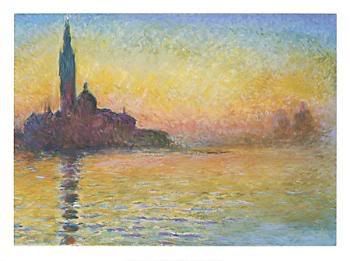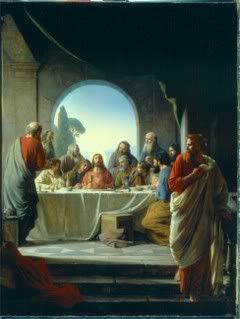
It was Charles Beaudelaire, the iconoclast 19th century “damned poet” who had said: “My soul travels on the smell of perfume like the souls of other men on music.”And because he has written poetry that transcends the Victorian of his times into the daring exploration of the erotic in quite a frank way, reminding the world that women and men smelled of quite a lot of things, “good” and “bad” as well, he is often referenced in perfume discussion as a resource of brilliancy in olfactory description and imagery.
It was not surprising then that his collection of poems titled "Les Fleurs du Mal" (flowers of evil) has been half the inspiration behind the new Gaultier masculine fragrance, Fleur du Mâle, which plays upon the word Mal in such a way as to remind as of Le Mâle (the masculine), the first perfume in the line that proved to be such a bestseller and which is still making huge profits for the company after more than a decade after its launch in 1995.
Le Mâle was a very tongue in cheek creation by nose Francis Kurkdjian both in presentation and aroma, as it capitalized on the popular gay reference of the sailor with its mattelot top and Breton insouciance torso bottle, clean shaven men in the ads and gym-rippled muscles, though ~ hardly the hardship of a real sailor! It explored avenues of the classic fougère construction, a recipe that imitates the smell of ferns in a forest, usually based on lavender. Lavender thus it was that dominated the ambience of Le Mâle, but with such a potent sweetness and cuddliness alongside as to toss the commonly butch image of the classic fougère and render it quite daring in the arsenal of the male of the species. Many men report that it has worked wonders in their pursuit of the opposite sex (or even the same sex when playing for that team) judging by the following it has on various discussion boards; which consolidates the fact that it is actually mostly women who go after the sweet touch in perfume and not vice versa as is so often touted to be.
So what does Fleur du Mâle have to offer anew? According to the press release in Women’s Wear Daily Léa Vignal-Kenedi,, head of the fragrance division of Jean Paul Gaultier, said: “Over the past 12 years [since the introduction of the original Le Mâle], many barriers have been lifted for men." Gaultier “…wanted to speak of this blooming of today's masculinity, of joie de vivre, of happiness" . Let’s not forget that this is the brand that introduced makeup for men in the form of bronzers, liners and light balms in their line Le Beau Mâle.
It seems that men are focused on in a new way and there has been lots of talk about the overabundance of orange blossom in the formula of the new fragrance, a note associated with happiness, lightness, freshness in a floral way, while simultaneously the new scent carries on the fougère accord of the original.
The new scent is composed by the same man, the very talented Takasago’s perfume nose Francis Kurkdjian, responsible for some of the most successful -in my personal opinion- fragrances of recent years such as the abstract beauty of Narciso for Her , the vague and delicate poise of Rose Barbare by Guerlain , almost the entire perfume stable of Gaultier (Le Mâle, Fragile and Gaultier2, with the notable exception of Classique), Armani Mania for men with its classy accords, the light velvet and yellow cotton of Cologne Blanche for the exclusive line of Dior and the smooth skin baked in the sun of Aquasun by Lancaster.
Mr.Kukdjian excels in rendering abstract accords of ambience music with a smooth progression and a slightly powdery feel that departs from the mossy feel of old or the makeup smell of traditional face powder, rendering interpretations of them in a modern and young way that seems fresh and new.
It almost illustrates this passage below from Beaudelaire:
“Exotic Perfume”
Islands of Lethe where exotic boughs
Bend with their burden of strange fruit bowed down,
Where men are upright, maids have never grown
Unkind, but bear a light upon their brows.
Led by that perfume to these lands of ease,
I see a port where many ships have flown
With sails out wearied of the wandering seas…

Although orange blossom is lauded as the dominant note in this new offering, even pictured in the advertising images which depict a young happy smiling male in a white tub full of white petals shot by Jean-Baptiste Mondino (how probable would that be realistically? I’m asking you), I am betting that there isn’t any actual orange blossom essence in there and the whole is rendered through the alchemy of synthetic components, just like in his masterful Narciso for Her which also supposedly features an orange blossom top note in the Eau de toilette concentration. This is orange blossom through the lens of a kaleidoscope, not the essential oil or absolute that is rendered by the actual blossom. And I am not saying that to diminish its value, because it creates an effect that is indescribable and very pleasing indeed. Along with a sharper and slightly bitter note of petit-grain (which makes a very brief opening impression), the light florancy is paired with the sustained fluffiness of copious amounts of hay-like coumarin and what smells to my nose like heliotropin, much as has already been explored in Cologne Blanche by Dior, to which I would designate this one as the more common, low-brow but equally interesting relative. Aspirations of grandeur are not present in Fleur du Mâle and why should there be anyway: it aims to please and comfort the wearer and the entourage and it succeeds admirably on both accounts as it has very good lasting power on the skin (through the next day even, in my personal test) and a pleasant, yet non-invasive sillage that is very welcome.
The white torso bottle in a white tin, which echoes the original blue one of Le Mâle, is tamer and not as ironic as the latter, something that is reflected in the advertising images as well, rendering this one more feminine and less likely to be picked up by a man, although of course blinkered approach does not work well in most perfume choices where individuality and taste matter more than arbitrary distinctions of what constitutes male and female. It remains to be seen if it will actually be bought by men all by themselves.
Instead I picture that the actual target group of the fragrance will prove to be women of all ages who will revel in its cloudy softness that resembles a Claude Monet sunset.
I for one would love to receive this.
Fleur du Mâle is available in 40, 75 and 125ml bottles of eau de toilette and an alcohol-dree deodorant stick, in major department stores.

Painting San Giorgio Maggiore by twilight by Claude Monet courtesy of fulcrumgallery.com. Pic of ad courtesy of Escentual.
.jpg)


 <
<


.jpg)

.jpg)
